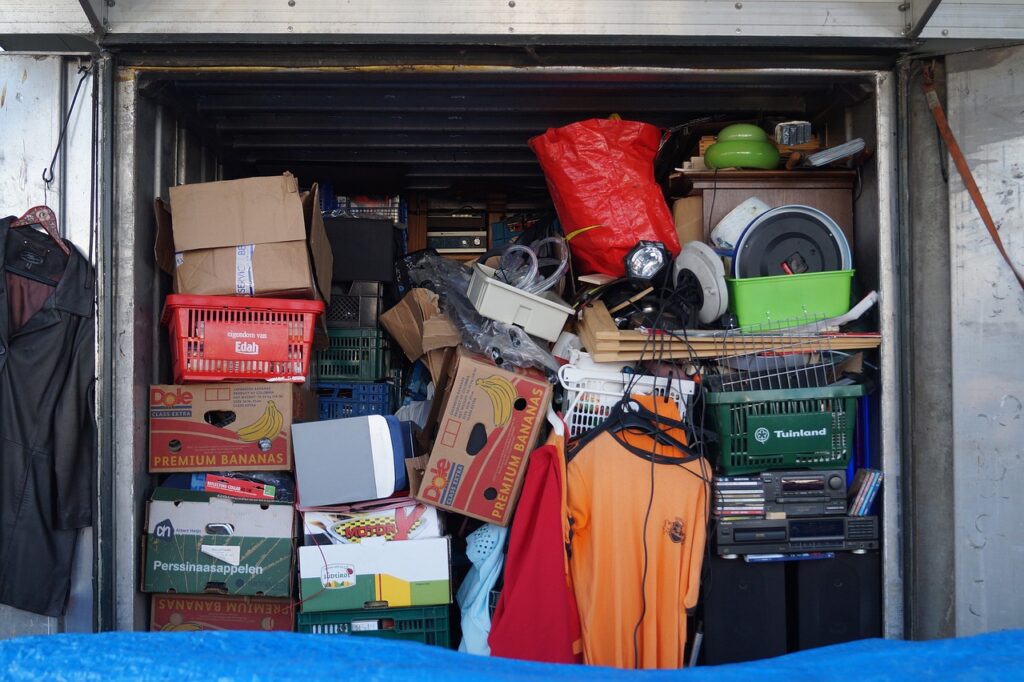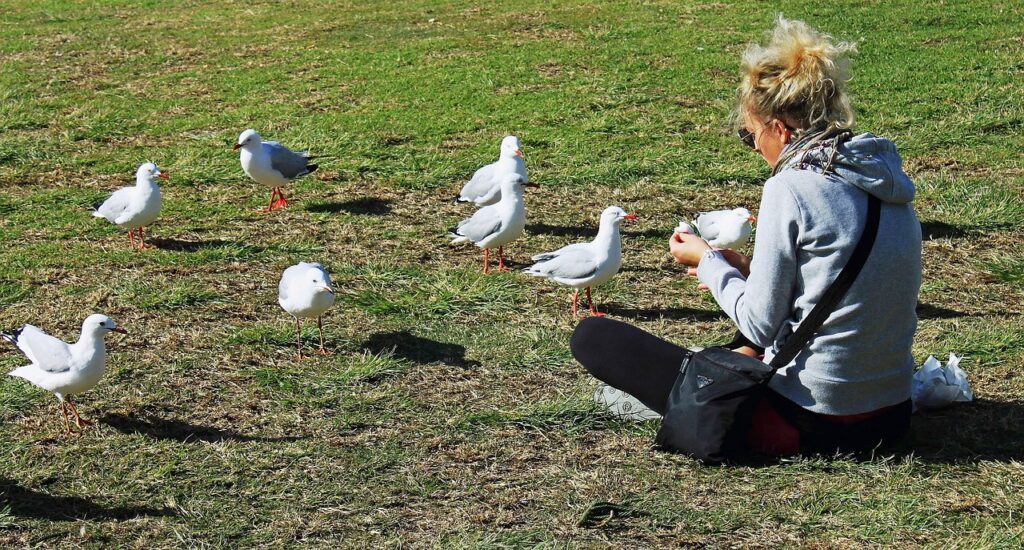We overlook the fact that to keep our own bodies in balance, we must maintain a balance in nature because we exist in it as a part. Every small act we perform boomerangs to impact our own lives. Instead of sitting on the fence, we should do our part at an individual level. Let us look at the top 5 things we can easily adopt.
#5 Stop hoarding
This is presumably the easiest to achieve. Think of the bag that is biting the dust in your cupboard. Very often we buy stuff, use it for a while and then discard it in the store for later. And later never comes. As a result, we end up hoarding things.


It is easy to blame the ads and offers for the extra stuff we buy but why not take a step forward? Why not identify such items in our house or office and share them with someone less fortunate? It can be anything- your old clothes, your unused headphones, extra utensils, or a piece of old furniture. These can easily be donated to your domestic help or trash picker. You may even take out time to visit a slum area.
Something almost useless for you can become someone else’s most cherished possession. Of course, you may not always donate your extra stuff. There is also the option of selling it online on various websites. The motive is to bring a thing back to utilization and reduce the overall carbon footprint. This will not only declutter your home but also give you inner satisfaction as there is great joy in giving.
Small gestures like this would recycle stuff instead of cultivating new things. It will reduce garbage and help maintain balance in nature.
#4 Include millets in your diet
Millets are arguably the most eco-friendly crop. But what are millets? Remember Bajre Ki Roti, jowar bhakri and Makki Ki Roti with saag? These are examples of millet serials such as Ragi, oats, barnyard millet, and foxtail. There are more than 20 billion varieties of millet. Ask your grandfather and he will tell you how millets were deeply engraved in the Indian tradition for centuries. Until of course the last few decades when the focus solely shifted to wheat and rice.
The beauty of millets is that they can grow in extremely marginalized lands, without any irrigation.
And around 65% of the total agricultural land in India comes in this category. In comparison to rice, every acre of millet farm saves 6 million liters of water for the nation. Millets grow so easily that they hardly require any use of pesticides. They also contribute to nurturing soils and improving their fertility and texture, thereby increasing the yield and hence the returns to the farmer. Millets are a boon for animals and birds as they generate tons of fodder. What’s amazing is that by any nutritional parameter, millets are miles ahead of rice and wheat. Be it fiber, calcium, iron, or beta-carotene. They are also among the top foods for fat loss.
Millets are the only answer to the malnutrition that plagues the Indian poor. Of course, you need not stop eating rice or wheat altogether. Just diversify your diet by including millet. You can eat them as Dalia (porridge) for breakfast, turn them into chapati, or make snacks and sweets out of them. This will make your food instantly more interesting, your body won’t face nutritional deficiencies and above all, you would have taken a major step in contributing towards many environmental issues that afflict our country.
#3 Own your surroundings to maintain balance in nature

This is about our immediate environment. We sometimes underrate the impact of little things. Each one of us can certainly do something for the life around us. It as easy as keeping a bowl full of water for the thirsty birds in the scorching heat or feeding stray animals with leftover food. This is not new to our culture.
Ask your grandmother and she will tell you about the tradition of preparing the first roti for the cow. Extra rotis were fed to the dogs and leftover food to the crows. Even ants and pigeons were not left out. Just think of the opportunities we lost to feed the stray lives around us. The last chapati that you overate, that flour which was infested by pests, or that leftover food. Every year we hear the news of birds dropping off the sky due to dehydration. Just a simple step can create such a huge impact.
We can also even take the initiative to plant trees in our vicinity. Even if each one of us pledges to plant just one tree every year, it will have a compounding effect on our surroundings.
The idea is to own your environment. Be a life that cares for the life around you.
#2 Reduce one-time plastic

How often do we buy packaged drinking water and throw it unceremoniously after it’s once used? Such disposable plastic waste has exploded in the last 50 years or so, out of which only 9% has been recycled. A 2017 study found that a whopping 79% of the total plastic ever produced has piled up in landfills or has seeped into water bodies. Animals mistake plastic for their food and as a result, huge amounts of plastic waste have a devastating effect on animals, birds, and aquatic life.
Over 1 lakh mammals and over 1 million seabirds are killed every year by eating plastic waste.
But that’s not the worst part. This plastic waste over time decomposes into microplastics which enter our food chain through the soil, the water we drink, and even the air we breathe. A study found an average of 325 microplastic particles per liter in packaged drinking water. Studies have found microplastics in human excreta, blood, and even unborn offspring. This foreign material in your body may become the reason for autoimmune diseases, hormonal disorders, and reproductive problems. So what can we do to change the scenario?
Just one simple swap like purchasing a reusable water bottle can spare the environment of millions of plastic waste each year. & and help maintain balance in nature.



Invest in a cloth bag and say no to plastic bags whenever you go out shopping. You can even keep handy the compostable carry bags made from corn starch. Then try to minimize the use of other single-use plastics like straws, cups, pet bottles, packaged foods, cutlery, and sanitary pads as much as possible. With such eco-friendly decisions, be sure that you are not just doing a service to the animals and nature around you but the positive impact of it will boomerang into your own life.
#1 Cut down on meat
I am sure you would have noticed how the highest recorded temperature is increasing every year. Well, the most effective step that an individual can take to reduce global warming is to adopt a vegetarian diet. In 2006, the UN estimated that carbon emissions produced by animals bred for meat were even more than cars, planes, and all other forms of transport put together.

Beef emits the highest carbon among all meats. If you replace it with chicken, the carbon drops to 5 times. By switching to fish, the number goes down further and with a plant-based diet, we are down to practically nothing. In fact, greenhouse gas emissions are just the tip of the iceberg. The meat industry is the world’s largest user of land resources. This has led to reckless deforestation and many species are now endangered. Almost half the antibiotics produced are used for livestock which later pollutes our soil, water, and air.
Switch that piece of chicken breast with paneer in your diet and you are saving at least 10 times more water. Cut non-veg and you are not just not supporting this cruel industry but also you are also reducing the risk of heart disease, obesity, type 2 diabetes, kidney damage, and even cancer.
If you can’t completely stop eating non-veg, you can surely cut it down. Every time you choose to eat vegetarian, you are saving the environment. Substitute with foods that have a similar texture as that of meat like jackfruit, mushrooms, and paneer. It can prove to be a game-changer.
If you are a vegetarian already, you can ensure that you ditch the foreign produce and switch to local foods that have a much lower carbon footprint.
Lastly
Rather than sitting on the fence, let us focus on what we as individuals can do to save our environment. So these were those 5 things that I believe anyone can do for the environment we survive in, to maintain balance in nature.
Another thing that we can do for the environment is to use toxin-free products. From chemical hair dyes and shampoos, you can switch to natural hair products like henna, indigo powder, and soap nut. From artificial food colors, you can switch to natural colors derived from plants such as beetroot for red, and spinach for green.
.

One comment
Pingback: Embracing the Canvas of Life: The Magic of Hobbies and Creativity - Meenu Arora's Blog